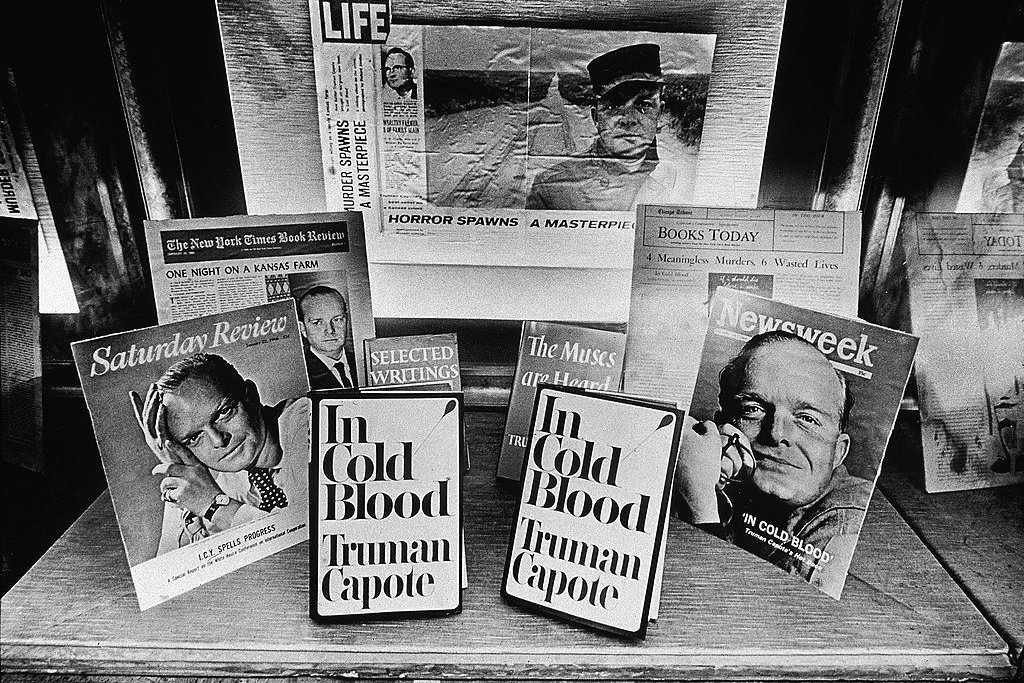Literary journalism is a distinctive genre that combines the narrative techniques of fiction with the factual rigor of journalism. It provides a rich, immersive experience for readers, allowing them to engage deeply with current events through the lens of storytelling. In an age where information is abundant yet often superficial, literary journalism stands out by weaving complex narratives that not only inform but also evoke emotion and provoke thought.
Characteristics of Literary Journalism

1. Narrative Structure
One of the defining features of literary journalism is its narrative structure. Unlike traditional journalism, which often adheres to the inverted pyramid style—where the most important information is presented first—literary journalism employs a storytelling approach that captivates readers from the outset.
- Storytelling Techniques: Literary journalists use techniques such as character development, dialogue, and vivid descriptions to create a narrative arc. This approach allows readers to become emotionally invested in the story, making the facts more relatable and impactful.
- Chronological and Non-Linear Narratives: Writers may choose to present their stories in a chronological manner or employ non-linear storytelling to build suspense and provide context. This flexibility allows for a more nuanced exploration of events, encouraging readers to think critically about the connections between different aspects of the narrative.
2. In-Depth Research
Literary journalism is characterized by its commitment to thorough research. Journalists often spend significant time on-site, immersing themselves in the environment and gathering firsthand accounts to enrich their narratives.
- Comprehensive Reporting: This genre demands extensive research, which may include interviews, observations, and archival work. The goal is to provide a well-rounded perspective on the subject matter, ensuring that the narrative is grounded in reality.
- Contextualization: Literary journalists excel at providing historical, cultural, and social context for current events. By situating stories within a broader framework, they help readers understand the complexities and implications of the issues at hand.
3. Vivid Descriptions
The use of vivid descriptions is another hallmark of literary journalism. By engaging the senses, writers can transport readers to the scene, allowing them to experience the story more fully.
- Sensory Detail: Through rich imagery and sensory language, literary journalists create a vivid tapestry of the setting, characters, and events. This attention to detail enhances the reader’s immersion in the narrative, making the experience more visceral.
- Emotional Resonance: Literary journalism often focuses on the human experience, exploring the emotions and motivations of individuals involved in the story. This emotional depth fosters empathy, allowing readers to connect with the subjects on a personal level.
Historical Context
1. Origins of Literary Journalism
The roots of literary journalism can be traced back to the 19th century, when writers began to experiment with blending narrative techniques and social commentary in their works.
- 19th Century Roots: Authors like Charles Dickens and Mark Twain employed storytelling to address social issues, using their narratives to critique society while entertaining readers. Their works laid the groundwork for the narrative journalism that would emerge later.
- The New Journalism Movement: The 1960s and 1970s marked a significant turning point for literary journalism with the rise of the “New Journalism” movement. Pioneers like Tom Wolfe, Truman Capote, and Joan Didion pushed the boundaries of traditional reporting by incorporating literary elements into their work. This movement emphasized the importance of personal voice and perspective in journalism, challenging the notion of objectivity.
2. Evolution and Influence
As literary journalism evolved, it was influenced by various cultural and literary movements, including postmodernism.
- Postmodern Influence: The late 20th century saw a shift towards more subjective narratives, with writers exploring their own experiences and viewpoints within their reporting. This trend allowed for a more intimate connection between the writer and the subject matter, enriching the storytelling knowledge process.
- Digital Age: The rise of the internet and digital media has transformed literary journalism, providing new platforms for writers to share their work. Online magazines, blogs, and social media have expanded the reach of literary journalism, allowing it to engage with a wider audience.
Significance in Today’s Media Landscape
1. Engaging Readers
In an era characterized by information overload, literary journalism stands out for its ability to engage readers in meaningful ways.
- Captivating Audiences: By employing narrative techniques that draw readers in, literary journalism captures attention in a way that traditional inca berita reporting often cannot. This engaging style encourages readers to invest time and emotional energy in the stories being told.
- Building Empathy: Literary journalism fosters empathy by focusing on personal stories and the human experiences behind current events.
2. Providing Context
Literary journalism excels at unpacking complex social, political, and cultural issues, offering readers the context necessary to understand the implications of current events.
- Complex Issues: In a world where issues are often oversimplified, literary journalism provides a nuanced exploration of topics that require deeper understanding. By delving into the intricacies of a story, literary journalists help readers grasp the interconnectedness of various factors at play.
- Encouraging Critical Thinking: The multifaceted narratives presented in literary journalism encourage readers to think critically about the world around them.
3. Preserving the Art of Storytelling
Literary journalism plays a crucial role in preserving the art of storytelling within the realm of journalism.
- Cultural Commentary: Literary journalism serves as a form of cultural commentary, reflecting societal values, challenges, and aspirations through the lens of current events. This commentary enriches the public discourse, prompting discussions about important issues.
- Legacy of Storytelling: By merging narrative techniques with factual reporting, literary journalism ensures that the human experience remains central to news reporting.
Notable Works in Literary Journalism
1. “In Cold Blood” by Truman Capote
Truman Capote’s “In Cold Blood” is often regarded as a seminal work in the genre of literary journalism.
- Impact: Capote’s work is credited with establishing literary journalism as a legitimate genre, showcasing the power of storytelling in reporting real events. By humanizing the victims and the perpetrators, Capote invites readers to grapple with the complexities of morality and justice.
2. “The Right Stuff” by Tom Wolfe
In “The Right Stuff,” Tom Wolfe explores the early days of the U.S. space program, combining detailed reporting with a narrative style that captures the excitement and challenges faced by astronauts.
- Impact: Wolfe’s work exemplifies how literary journalism can convey the complexities of technological and human endeavors. Through vivid descriptions and character-driven storytelling, Wolfe immerses readers in the world of space exploration.
3. “Slouching Towards Bethlehem” by Joan Didion
Joan Didion’s “Slouching Towards Bethlehem” is a collection of essays that reflects her observations of California in the 1960s, blending personal narrative with cultural critique.
- Impact: Didion’s work highlights the intersection of personal experience and broader societal issues, a hallmark of literary journalism. Her keen insights into the cultural landscape of the time resonate with readers, making her essays timeless.
The Role of Literary Journalism in Social Change
1. Raising Awareness
Literary journalism has the power to raise awareness about social issues and injustices, often bringing attention to stories that might otherwise go unnoticed.
- Highlighting Marginalized Voices: Many literary journalists focus on underrepresented communities and marginalized voices, shedding light on their experiences and struggles. By amplifying these stories, literary journalism can challenge dominant narratives and promote social change.
- Catalyst for Action: Engaging narratives can inspire readers to take action, whether through advocacy, activism, or simply by fostering a greater understanding of the issues at hand. Literary journalism can serve as a catalyst for social change by motivating readers to engage with the world around them.
2. Challenging Power Structures
Literary journalism often challenges established power structures by exposing corruption, inequality, and injustice.
- Investigative Narratives: Many literary journalists employ investigative techniques to uncover hidden truths and hold those in power accountable. By weaving together facts and personal stories, they create compelling narratives that resonate with readers and prompt critical discussions.
- Encouraging Civic Engagement: By illuminating the complexities of societal issues, literary journalism encourages civic engagement and informed citizenship. Readers are empowered to question authority and advocate for change, fostering a more active and engaged public.
The Future of Literary Journalism
1. Adaptation to Digital Media
As the media landscape continues to evolve, literary journalism must adapt to new formats and platforms.
- Online Platforms: The rise of online magazines, blogs, and social media has created new opportunities for literary journalists to share their work. These platforms allow for greater accessibility and engagement, reaching diverse audiences across the globe.
- Multimedia Storytelling: The integration of multimedia elements—such as video, audio, and interactive graphics—can enhance the storytelling experience. Literary journalists can leverage these tools to create immersive narratives that resonate with readers in new ways.
2. The Importance of Authenticity
In an age of misinformation and sensationalism, the demand for authentic storytelling is more important than ever.
- Trust and Credibility: Literary journalism’s commitment to in-depth research and narrative integrity can help restore trust in journalism. By prioritizing authenticity and accuracy, literary journalists can build credibility with their audiences.
- Human Connection: As readers seek more meaningful connections with the stories they consume, literary journalism’s focus on the human experience will continue to resonate. By highlighting the emotions, struggles, and triumphs of individuals, literary journalism can foster a sense of shared humanity.
Conclusion
Literary journalism represents a vital intersection of storytelling and factual reporting, enriching our understanding of current events through compelling narratives and in-depth research. As the media landscape continues to evolve, the significance of literary journalism remains steadfast, offering readers a unique lens through which to view the world.
Read Also About Global health refers to the health of populations worldwide and the efforts to improve health outcomes, reduce disparities, and address health challenges that transcend national borders.


